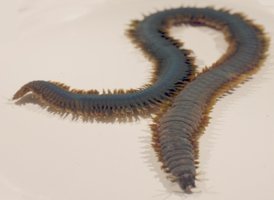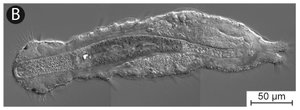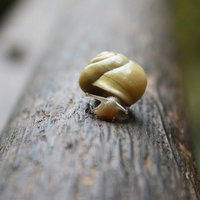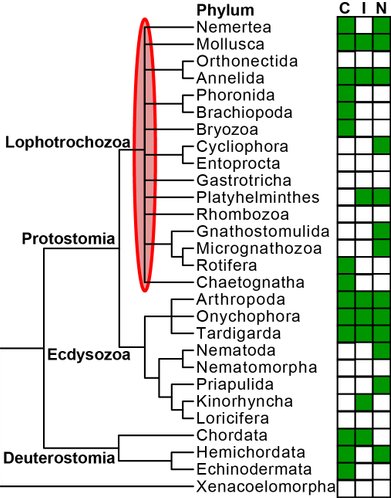Torsten H. Struck
Frontiers in Evolutionary Zoology
In our research, we are interested in the origin of Bilateria as well as the origin and evolution marine invertebrates, specifically small interstitial phyly, at deep taxonomic levels. As the origin of bilaterian animals is within the marine realm these interests complement each other.
Traditionally, it had been assumed that the evolution of bilaterian animals progressed from a simple, acoelomate body organization as can be found in flatworms towards more complex forms like the segmented worms (Annelida) with a true secondary body cavity, the coelom. Due to molecular data the phylogenetic relationships of bilaterian animals had been strongly rearranged dividing Bilateria into three major groups, Deuterostomia, Ecdysozoa (the molting animals) and Spiralia (also known as Lophotrochozoa). This initiated a still ongoing debate about the evolution of Bilateria and if it was really from simple to complex or more complicated including secondary reductions. Crucial in this discussion is to investigate the evolution and phylogeny of Spiralia comprising 16 of the 32 animal phyla. However, the phylogeny is more or less still completely unresolved (see picture to right). Therefore, in our research we are generally interested in the evolution of marine invertebrate worms at all taxonomic levels, especially Annelida, Nemertea, Platyhelminthes, Gastrotricha and Gnathostomulida.
This research is obtaining funding from different resources. Most of the funding comes through the FRIPRO project funded by the NFR called “InvertOmics – Phylogeny and evolution of lophotrochozoan invertebrates based on genomic data” to address these questions specifically. Additional funding for genome sequencing comes through genome projects that we are also part of. In specific are these the NFR project EBP-Nor and the EU-funded Biodiversity Genomics Europe (BGE). In this project, we aim to generate high-quality genomes for 50 species covering all spiralian/lophotrochozoan phyla using modern sequencing technology. Several lophotrochozoan species have very small body sizes (smaller than 0.5 mm), but we will address this challenge by adapting existing single-cell genomic protocols from cancer research. High-quality genomes will be determined for the first time for such species. We will also develop new bioinformatic tools. Due to both these new genomes and tools, we will be able find out how the different lophotrochozoan phyla are related to each other and how the last common ancestor of animals like humans, insects, and earthworms looked and how evolution proceeded within this large group.
Some members of the different projects:
Alberto Valero-Gracia
James Fleming
Lutz Bachmann
Lee Hsiang Liow
Rebekah Oomen (University of Oslo)
Kjetil Sigurd Jakobsen (University of Oslo)
Kevin M. Kocot (University of Alabama)
Nickellaus Roberts (University of Alabama)
Kenneth M. Halanych (Auburn University)
Alexander Suh (University of East Anglia)
Rosa Fernandenz (CSIC-UPF)
Ana Riesgo (Museo Nacional de Ciencias Naturales)
Astrid Böhne (LIB Bonn)
Previous projects:
- NSF-ATOL-10-513 “Collaborative Research: WormNet II: Assembling the Annelid Tree of Life”
- DFG-STR-683/7-1 “AnnEvol – Evolution and phylogeny of Annelida based on phylogenomic data (i.e. EST libraries)”
- DFG-STR-683/6-1 & 6-2 “Phylogenetic position of interstitial polychaete taxa of supposedly paedomorphic origin (i.e., Dinophilidae, Protodrilida, Polygordiidae and Nerillidae) using mitogenomic data”
- DFG-STR-683/5-2 “Phylogenomics of worm-like lophotrochozoans and platyzoans (Nemertea, Gastrotricha, Gnathostomulida)” within DFG priority program SPP 1174 “Deep Metazoan Phylogeny – Stammesgeschichte der Großgruppen der Tiere”
- DFG-Pu-84/5-1 “Phylogenomics of worm-like lophotrochozoans (Annelida, Sipuncula, Nemertea, Platyzoa)” within DFG priority program SPP 1174 “Deep Metazoan Phylogeny – Stammesgeschichte der Großgruppen der Tiere”
- DFG-STR-683/3-1 “Phylogenetic position of Annelida and possible subordinated annelid taxa (e.g. Sipuncula and Myzostomida) within Lophotrochozoa based on molecular data” within DFG priority program SPP 1174 “Deep Metazoan Phylogeny – Stammesgeschichte der Großgruppen der Tiere”





